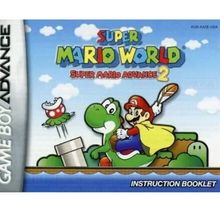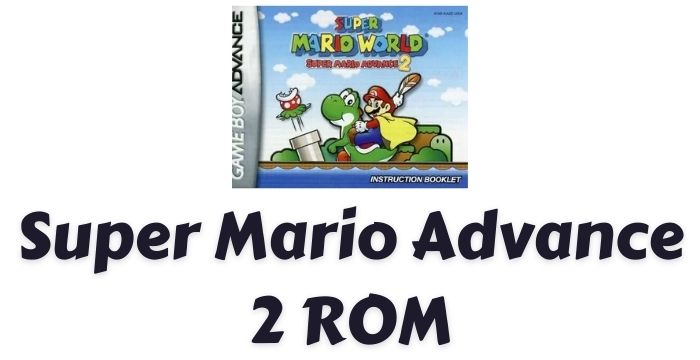Nintendo Entertainment Analysis and Development’s version of the game on the GameBoy Advance was given the title ” Super Mario Advance 2: Super Mario World.” It was the title of the first game (EAD). On December 14, 2001, it was released in Japan, followed by North America on February 11, 2002, and Europe and Australia on April 15, 2002. It’s the second instalment in Super Mario Advance’s “Advanced” series. One of the most important differences from the original version of the game is that it can only be played by one person rather than two. Regardless, Luigi may still be played, but this time as an entirely different character. The game was a commercial success, with at least 3,291,000 copies sold in the United States alone.
At this moment, it is not feasible to get the reference for this statement. Mario Bros. is featured in the game, as is the case with past Super Mario Advance games, and multiplayer functionality is available. In Japan, it was made accessible again on the Wii U Virtual Console on April 3, 2014. It was released in the United States on December 25, 2014. It was released in Europe, Australia, and New Zealand in March 2016.

| Filename: | Super Mario Advance 2 – Super Mario World |
| Genre | Action |
| Region: | USA |
| Console: | Gameboy Advance |
| Rating | 4.2 stars out of 5 |
Also Download: Pokemon Alpha Sapphire | Pokemon Omega Ruby | Pokemon Jupiter
Table of Contents
Gameplay
Both the gameplay and the narrative of Super Mario Advance 2: Super Mario World for the Super Nintendo Entertainment System have been faithfully recreated. In Dinosaur Land, where the players control either Mario or Luigi, the wicked King Bowser, and his Koopalings capture and imprison seven of the indigenous Yoshis in eggs. They do this so that Princess Toadstool, commonly known as Princess Peach, may be rescued. The game’s several worlds are navigated via an overworld map that shows pathways that connect to a range of various locales and goods, such as action panels and strongholds. Every level features its own set of challenges that require the player to display a variety of Mario-related skills, such as running and leaping, swimming while avoiding obstacles, evading and destroying foes, and completing the Spin Jump.
The current edition of the game includes the Super Mushroom, Fire Flower, and Starman’s vital power-ups, as well as the Cape Feather, which was included in the initial version of the game. The Super Mushroom enlarges Mario or Luigi, the Fire Flower enables him to launch fireballs, the Starman makes him invincible, and the Cape Feather enables him to fly and strike foes by spinning around. Yoshi, Mario’s brother and horse from Super Mario World, makes a reappearance in this game. According to the game’s description, Yoshi can devour most foes and get unique powers by carrying colorful Koopa shells in his mouth. Mario and Luigi may use Yoshis in any stage of the game after finding their eggs in Star World and ensuring that they are fed a suitable quantity of adversaries or things to consume. When Yoshi holds a Koopa shell in his mouth, he has the power to unleash a special skill that matches the shell’s colour.
Each of the previous Super Mario Advance titles contained a re-creation of Mario Bros. that could be played by one to four players at the same time, in addition to the main gameplay mode.
Because the Super Mario Wiki has adopted the Creative Commons Attribution-ShareAlike license, you may view the previous material. The names of the writers who contributed to the work, or a link to the original article, must be supplied to give credit where credit is due.
Features and changes
Takashi Tezuka, the game’s director, worked alongside Shigeru Miyamoto, the producer behind Super Mario Bros. and The Legend of Zelda. Shigefumi Hino was responsible for the aesthetics. Three important programmers and a character designer made comprised Nintendo Entertainment Analysis & Development’s ten-person development team, all of whom had previously worked on Super Mario Bros. According to a retrospective interview with the core team, Miyamoto was the individual who had the most influence on the production of the game.
The Super Nintendo Entertainment System had not been on the market for very long when it was initially released (SNES). Working with technology that was both new and sophisticated presented significant obstacles to the crew. Because the software tools were not yet accessible, Tezuka said that “the team had to develop something fresh” at this time. According to Miyamoto, some mechanisms, such as scrolling and the number of colours that might be employed, were no longer restricted in their potential application. As a hardware experiment, the team chose to port Super Mario Bros. 3 to the Super Nintendo Entertainment System (SNES). Even though the game’s aesthetics had been upgraded, they thought it was the same, even though it seemed to be better. After that, Miyamoto decided that the team’s goal would be to develop something “totally different” with the new technology.
Nintendo’s developers were unable to construct a dinosaur to join Mario on his escapades due to the constraints of the Nintendo Entertainment System (NES). Yoshi’s influence may be traced back to Miyamoto’s 1984 game Devil World, which featured a green dragon that resembled Yoshi. Yoshi’s design initially emerged at this location. When he was working on Super Mario Bros. 3, Miyamoto had several sketches on his desk, including one showing Mario riding a horse. Tezuka tasked Shigefumi Hino with producing a creature that resembled a reptile based on Miyamoto’s designs as Super Mario World progressed. This task was assigned to Hino. Tezuka admitted to Hino that the character’s design “didn’t fit into the Mario world” since it was too “reptilian.” Tezuka asked Hino to create a “cuter” character. According to Tezuka, Yoshi’s birth was most likely influenced by Miyamoto’s love of horseback riding and rural or western themes. This is Tezuka’s reasoning.
Koji Kondo decided to utilise the same songs in Super Mario Advance 2: Super Mario World, albeit in a new arrangement, after giving considerable consideration to the method by which he had produced individual melodies for Super Mario Bros. The goal of the game as players progressed was to not only test their musical knowledge by asking them to recognize well-known songs, but also to expose them to a range of musical styles. Kondo recalls the process of producing music for the first Super Nintendo Entertainment System game as “overjoyed” since he was able to employ all eight sounds at once. He sequentially used a variety of instruments throughout the game’s theme tune to symbolize the new system’s technological supremacy. Kondo grew more concerned about how people would react to the increasingly strange instrument combinations he was inventing as he observed how the usage of more traditional square and triangle waves had “gained favor” with clients. Kondo used a variety of musical instruments for the game’s sound effects rather than square waves to emphasize the game’s mix of old and contemporary aspects. Kondo composed the game’s entire music over around a year and a half.
After two years of battle between Nintendo’s Super Nintendo Entertainment System (SNES) and Sega’s Mega Drive, Super Mario World was launched in the thick of the console wars. For the first time since 1985, Nintendo’s Super Nintendo Entertainment System (SNES) defeated Sega’s Mega Drive. Even though Nintendo ultimately eclipsed Sega as the largest firm, Nintendo lost market share to Sega. Sonic the Hedgehog, Sega’s mascot, was seen to be a better choice than Mario because of Sonic’s quicker speed and “cooler” overall look. In a public forum, Miyamoto said that he thought the game was incomplete and that development had been rushed to meet a deadline.
FAQS
Do Super Mario Advance 2 and Super Mario World have any differences?
Compared to its predecessor, Super Mario Advance 2 makes much fewer changes to the original game. Super Mario World 2 is a good successor to the original despite the differences in gameplay, aesthetics, and other factors.
How can you fly in Super Mario World Advance 2?
You can fly with the cape if you run for a short distance while holding down the B button and then jump into the air. Pressing B when Mario is swiping back and forth with the D-Right Pad and the left buttons allows him to temporarily ascend.
How real are Yoshi’s alleged flight abilities?
Blue Yoshis can fly if they consume any Koopa shells. If a Red Yoshi presses B after eating a shell, three massive fireballs will be released. When a Yellow Yoshi falls, a series of little earthquakes are set off.
Blue Yoshi’s exact location remains a mystery. Is it true?
One of two things will result in you getting a Blue Yoshi. To get Yoshi to Cheese Bridge, there are two options (World 4-1). A box with wings is located at the halfway point. To become a Blue Yoshi, Yoshi must first touch the wing of another Yoshi.
conclusion
The video game Super Mario World: Super Mario Advance 2 may now be played on a Game Boy Advance as a result of a conversion that was done. Because of the hard effort that was put in, this was finally able to be accomplished. The Super Nintendo Entertainment System was the first video game console that it was compatible with and could be played on when it was originally released on the market (just as the first Mario Advance was a remake of the SNES version of Super Mario Bros. The introduction of this new installment means that the famous “Mario Bros.” arcade game will be getting a fresh coat of paint to bring it up to date and make it more suited for participating in multiplayer contests. This will be done to bring it more in line with modern standards. This will be done to make it closer in line with the expectations placed on current video games (also in Mario Advance).

